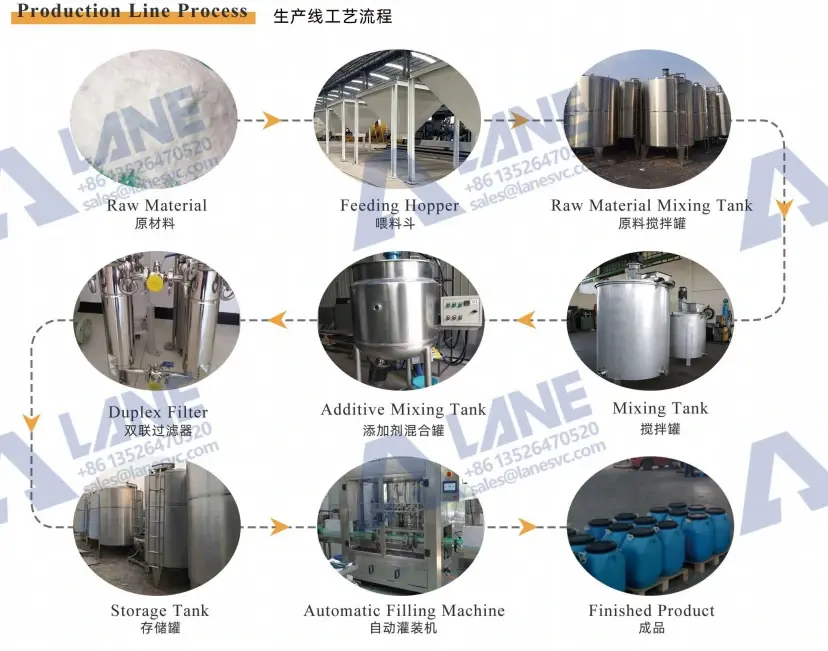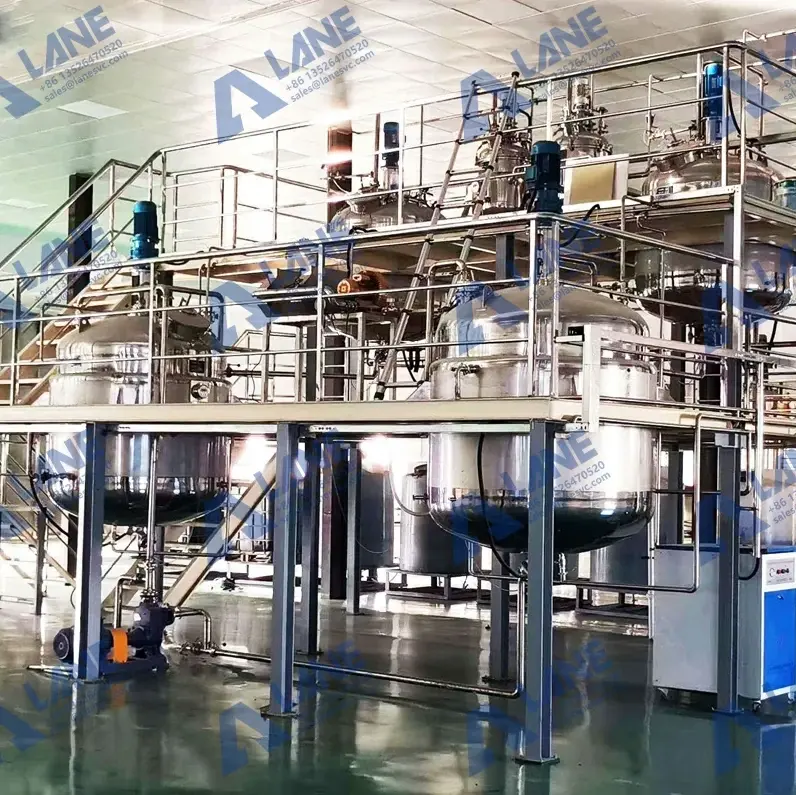Building a Rice-Specific Liquid Fertilizer Production Line for Modern Agriculture
- Nancy Ju
- Oct 21
- 5 min read
In modern agricultural systems, rice-specific liquid fertilizer production line technology is transforming how farmers nourish one of the world’s most vital crops. Rice, as a staple food for more than half of the global population, demands precise nutrient management to maintain high yields, soil fertility, and sustainability. As traditional granular fertilizers face challenges such as nutrient loss, soil acidification, and inefficiency, liquid fertilizers—especially those formulated specifically for rice—are becoming a game-changer.
A well-designed rice-specific liquid fertilizer production line allows the conversion of various raw materials—such as organic matter, humic acid, and trace minerals—into stable, nutrient-balanced solutions tailored for paddy fields. This not only enhances fertilizer utilization but also reduces environmental pollution and production costs.

Why Rice Needs a Specialized Liquid Fertilizer
Rice is a semi-aquatic crop with unique nutritional requirements and growing conditions. Unlike upland crops, rice plants grow in flooded soils, where oxygen levels, pH, and microbial activity differ significantly. This affects how nutrients are absorbed and released.
Therefore, generic fertilizers often fail to provide the right balance of nitrogen (N), phosphorus (P), and potassium (K), along with micronutrients like zinc, iron, and silicon. A rice-specific liquid fertilizer production line solves this issue by creating customized nutrient formulations with optimized solubility and absorption efficiency for paddy soils.
Liquid fertilizers are easier to apply through irrigation systems, foliar spraying, or fertigation—methods that deliver nutrients directly to plant roots and leaves. This precision feeding improves nitrogen efficiency, promotes uniform growth, and results in stronger tillering, better panicle formation, and higher grain quality.
Raw Materials Used in a Rice-Specific Liquid Fertilizer Production Line
The production of rice-specific liquid fertilizer involves a combination of organic and inorganic materials, selected to match the nutritional profile of rice plants at different stages.
Common raw materials include:
Organic matter: fermented animal manure, soybean meal, or seaweed extract for slow-release nitrogen and carbon sources.
Mineral nutrients: urea, potassium nitrate, monoammonium phosphate, and potassium sulfate for essential macronutrients.
Micronutrient additives: zinc sulfate, iron chelates, manganese, boron, and silicon for strengthening rice plant resistance.
Biostimulants: humic acid, fulvic acid, and amino acids to enhance nutrient uptake and root vitality.
LANE Heavy Industry’s advanced production systems ensure that all raw materials are precisely dosed, dissolved, and homogenized to create a stable, high-quality fertilizer solution suitable for commercial rice farming.
The Complete Process of a Rice-Specific Liquid Fertilizer Production Line
Designing and operating a rice-specific liquid fertilizer production line involves several integrated stages—from material preparation to final packaging. Each stage determines the consistency, stability, and effectiveness of the finished product.
1. Material Preparation and Dosing
All raw materials are weighed and proportioned according to a specific formula tailored for rice crops. Automated batching systems ensure accuracy, minimizing human error and guaranteeing consistent nutrient concentration.
2. Mixing and Reaction
In this stage, liquid and solid materials are mixed using stainless steel reactors equipped with heating and agitation systems. This ensures uniform dissolution and reaction between ingredients, forming a homogenous solution.
LANE’s liquid fertilizer mixing tank feature temperature control and anti-corrosion linings, ideal for acidic or alkaline materials. The reaction process may include pH adjustment and the addition of stabilizers to prevent precipitation.
3. Filtration and Homogenization
After mixing, the fertilizer passes through dual filter to remove undissolved particles. High-speed homogenizers ensure the solution remains stable and clear over time, avoiding separation during storage or transport.
4. Cooling and Storage
The solution is cooled to prevent degradation of heat-sensitive compounds such as amino acids or enzymes. It is then transferred to stainless steel or plastic storage tanks designed to resist corrosion and microbial growth.
5. Quality Testing
Before packaging, the fertilizer undergoes rigorous testing for nutrient concentration, pH, solubility, and stability. LANE Heavy Industry provides automated control systems that monitor these parameters throughout the production line.
6. Packaging
Finally, the finished rice-specific liquid fertilizer is filled into bottles, drums, or IBC tanks using automatic filling and sealing machines. Packaging sizes depend on market demand—typically from 1L consumer bottles to 1000L bulk containers for agricultural distributors.

Advantages of a Rice-Specific Liquid Fertilizer Production Line
Improved Nutrient Efficiency
Liquid fertilizers are immediately available for plant uptake, reducing nutrient loss through volatilization and leaching. This is particularly beneficial for flooded rice paddies where nutrients can easily wash away.
Precision Application
Farmers can apply the fertilizer through drip irrigation or foliar spraying, allowing targeted feeding during key growth stages such as tillering, panicle initiation, and grain filling.
Environmental Protection
By converting organic materials into liquid fertilizer, the system reduces waste and pollution while improving soil microbial diversity and carbon balance.
Customization and Flexibility
LANE’s production lines can adjust formulas according to local soil conditions, rice varieties, and climate zones, ensuring optimal performance and adaptability.
Energy and Cost Efficiency
Modern systems feature energy-saving mixing technology, automated dosing, and closed-loop circulation, significantly lowering production costs and emissions.
Applications of Rice-Specific Liquid Fertilizer
The application methods for rice liquid fertilizer depend on crop stage and nutrient goals.
Basal fertilization: Liquid fertilizer diluted and applied during land preparation to boost early root growth.
Tillering stage: Foliar sprays or fertigation systems supply nitrogen and micronutrients for strong tiller development.
Panicle initiation: Phosphorus and potassium-enriched formulations enhance flowering and grain filling.
Post-harvest soil conditioning: Residual organic nutrients improve soil fertility and microbial recovery for the next crop cycle.
In Southeast Asia—particularly in countries like Indonesia, Vietnam, and the Philippines—liquid fertilizers are increasingly integrated into precision rice farming systems, helping farmers reduce input costs while improving yield stability.
LANE Heavy Industry: Expertise in Liquid Fertilizer Solutions
With years of global experience in fertilizer machinery, LANE Heavy Industry provides turnkey solutions for rice-specific liquid fertilizer production lines. Their systems combine automation, precision control, and durable design to meet industrial-scale needs.
LANE’s production lines include:
Automated batching and weighing systems
Stainless steel reactors and mixing tanks
pH monitoring and nutrient analysis units
Filtration and homogenization modules
Energy-efficient filling and packaging systems
Each system can be customized according to plant capacity—from small 1–2 tons/hour setups for regional fertilizer manufacturers to large 10–20 tons/hour industrial operations serving multiple provinces.
LANE also provides full technical support, including process design, installation guidance, and staff training. Their engineering team ensures that clients not only get advanced equipment but also the knowledge to operate it efficiently and safely.
Case Example: Liquid Fertilizer for Rice Farms in Southern India
In 2024, a fertilizer company in Tamil Nadu collaborated with LANE Heavy Industry to establish a rice-specific liquid fertilizer production line with a capacity of 5 tons per hour. The facility utilized locally sourced raw materials such as molasses, urea, and micronutrient salts.
After six months of operation, the company reported:
20% increase in rice yield due to better nutrient absorption.
30% reduction in fertilizer costs, as liquid fertilizers required lower dosages.
Improved soil structure and organic matter content, verified through field analysis.
The project also contributed to local employment and waste recycling, aligning with India’s sustainability goals in agriculture.

The Future of Rice Fertilization
As global demand for rice continues to grow, sustainable and efficient fertilization systems will play a key role in feeding billions of people. The rise of rice-specific liquid fertilizer production lines marks a crucial step toward precision agriculture—where nutrients are tailored, controlled, and delivered intelligently.
By integrating automation, data monitoring, and eco-friendly production methods, manufacturers like LANE Heavy Industry are helping farmers achieve higher yields with fewer inputs and lower environmental footprints.
Conclusion
The rice-specific liquid fertilizer production line is more than a technological innovation—it represents the future of rice farming. By combining advanced engineering, nutrient science, and sustainable practices, it ensures that every drop of fertilizer delivers maximum benefit to both the crop and the planet.
As countries across Asia and Africa continue to modernize their agricultural systems, the adoption of customized liquid fertilizer production technology will play a vital role in ensuring food security, profitability, and ecological balance.
Email: sales@lanesvc.com
Contact number: +86 13526470520
Whatsapp: +86 13526470520






Comments